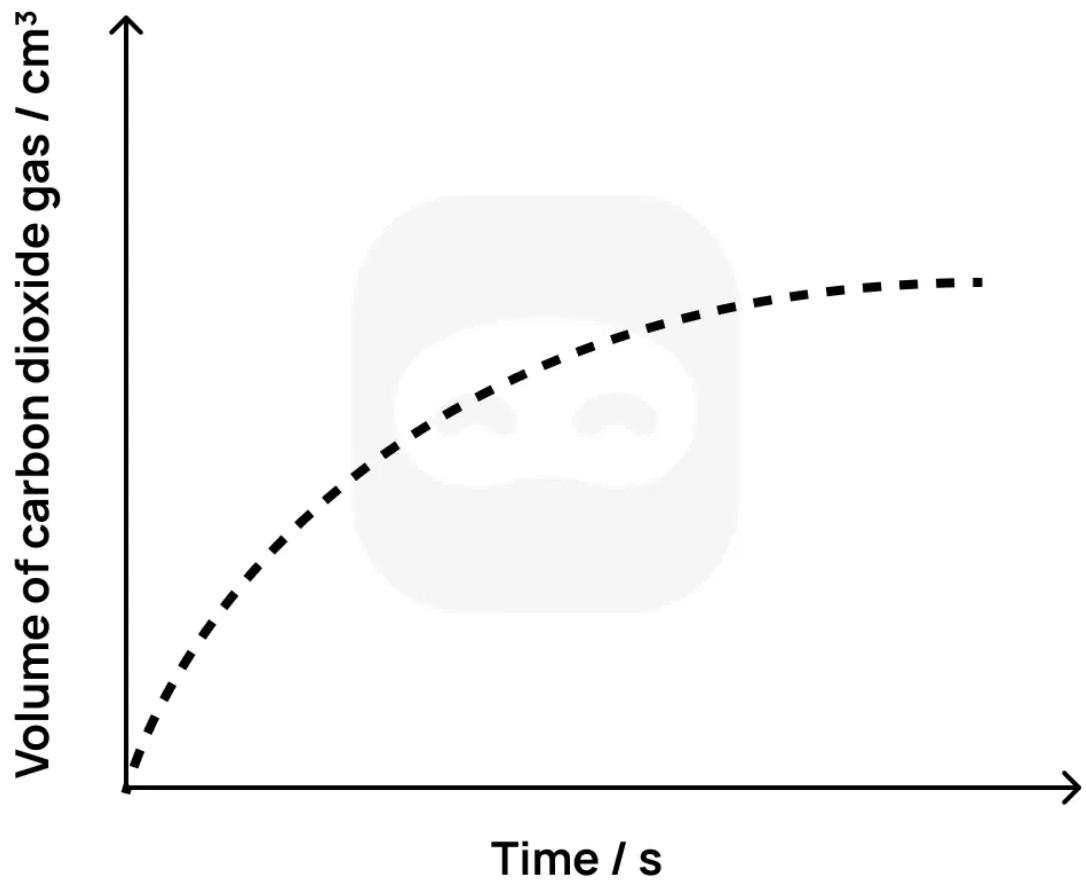

Practice R2.2 How fast? The rate of chemical change with authentic IB Chemistry exam questions for both SL and HL students. This question bank mirrors Paper 1A, 1B, 2 structure, covering key topics like atomic structure, chemical reactions, and organic chemistry. Get instant solutions, detailed explanations, and build exam confidence with questions in the style of IB examiners.
The reaction between sodium thiosulfate and hydrochloric acid forms a precipitate:
Describe a method to determine the rate of this reaction.
Suggest how temperature affects the time for the cross to disappear.
Explain this effect in terms of activation energy.
Ammonia is formed by the Haber process:
The diagram below shows the energy profile of this reaction.

State what is meant by the term activation energy.
Identify whether the reaction is exothermic or endothermic and justify your answer using the diagram.
Suggest one reason why a high temperature is required for this reaction to proceed at a practical rate.
Explain how the use of a catalyst would affect the energy profile diagram.
The Haber process is a reversible reaction. State and explain one condition used in industry to increase the yield of ammonia.
Hydrogen peroxide decomposes slowly at room temperature:
State one way to measure the rate of this reaction.
State how the rate of reaction changes as the reaction proceeds.
Explain your answer to part 2.
The reaction between calcium carbonate and hydrochloric acid is represented by the following equation:
A student measured the volume of carbon dioxide produced over time at room temperature. The results are shown in the graph below.

State the meaning of the term rate of reaction.
Describe the shape of the graph.
Determine the average rate of reaction between 0 and 10 seconds if the volume of collected at 10 s is 22.5 cm³.
Suggest why the reaction eventually stops.
Explain, in terms of collision theory, why the rate of reaction is highest at the beginning.
Sketch how the graph would differ if the concentration of hydrochloric acid were doubled.
Hydrogen peroxide decomposes in aqueous solution according to the reaction:
The concentration of hydrogen peroxide was measured over time. The graph below shows the concentration of H2O2 decreasing during the reaction.

Explain how the rate of reaction can be determined from the graph at a specific time.
Suggest why the curve flattens out as the reaction proceeds.
Calculate the average rate of reaction between and seconds, given that falls from 0.400 mol dm-3 to 0.200 mol dm-3.
Describe how you would determine the initial rate of reaction using the graph.
The rate equation for the decomposition is:
Explain how you could determine the order of reaction, , from experimental data.
Sketch a graph of versus time for a first-order reaction.
The graph below shows the distribution of molecular energies in a sample of gas at a temperature .

State what is represented by the area under the curve.
Explain why no particles have zero energy, and why the curve approaches but never touches the x-axis.
Predict and sketch how the curve would change if the temperature were increased to a temperature .
Using the graph, explain why increasing the temperature increases the rate of a chemical reaction.
Powdered magnesium reacts faster with hydrochloric acid than a strip of magnesium metal.
State the product formed in the reaction besides .
Suggest why powdered magnesium reacts faster than a strip.
Identify the factor affecting the rate in this case.
Photosynthesis can be represented by the following equation:
The energy profile diagram for photosynthesis is shown below.
State the meaning of the term endothermic reaction.
State and explain whether photosynthesis is an exothermic or endothermic reaction based on the diagram.
Explain the role of light energy in this reaction.
State two ways in which the energy profile diagram would change if a catalyst (e.g., an enzyme) were used.
Suggest why photosynthesis would not occur in the dark, even if all reactants are present.
The diagram below represents the potential energy changes during the combustion of methane:
The activation energy of the reaction is .

State the meaning of the term activation energy.
Identify whether this reaction is exothermic or endothermic. Justify your answer using the diagram.
Explain how a catalyst would affect the energy profile diagram.
Predict how increasing the temperature would affect the rate of this reaction.
The combustion of methane releases energy. State one practical use of this energy release in everyday life.
Hydrogen and iodine react to form hydrogen iodide:
Describe how increasing the temperature affects the rate of this reaction.
Explain your answer using collision theory.
Sketch a Maxwell–Boltzmann distribution to show the effect of increased temperature. Label both curves clearly.